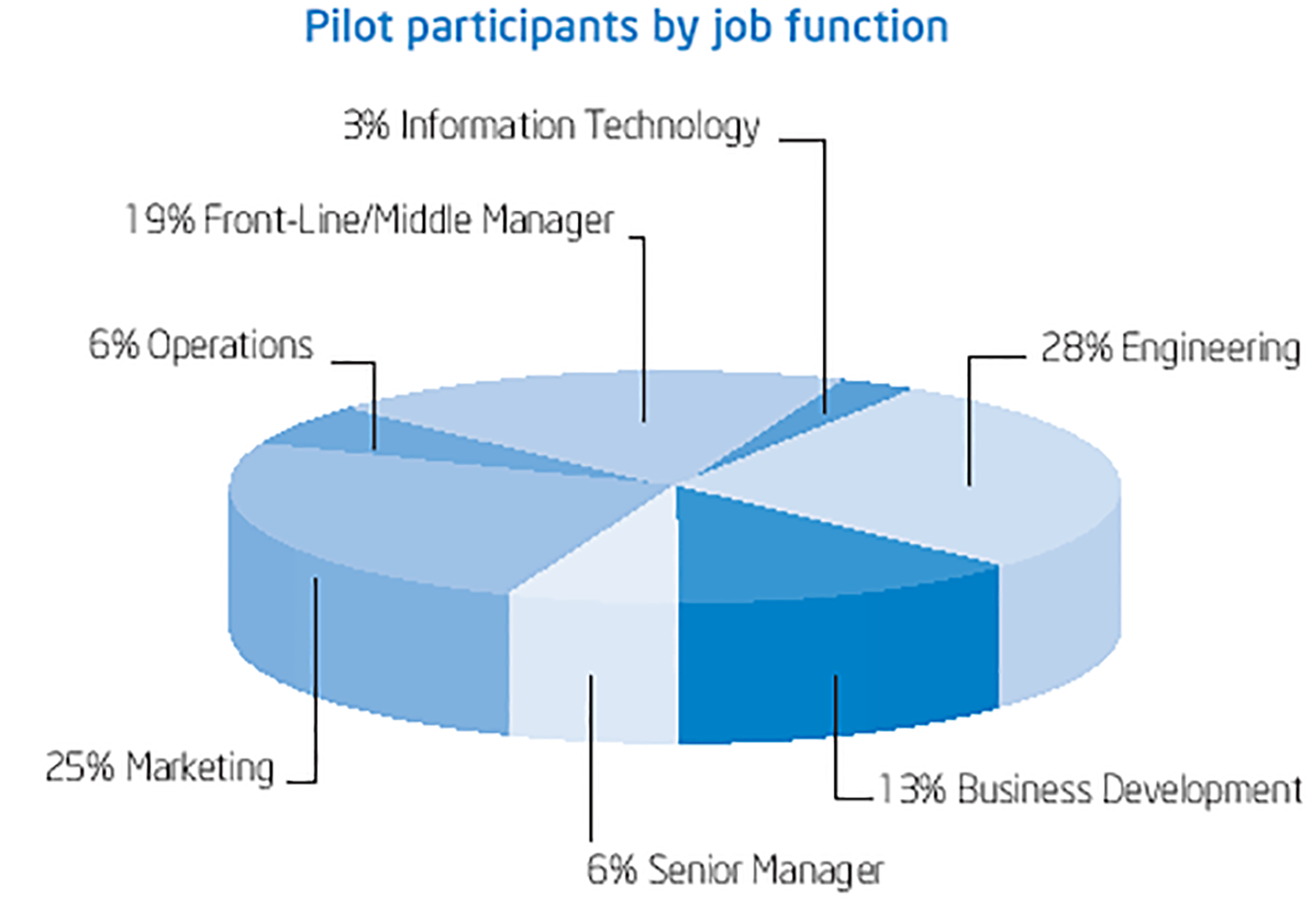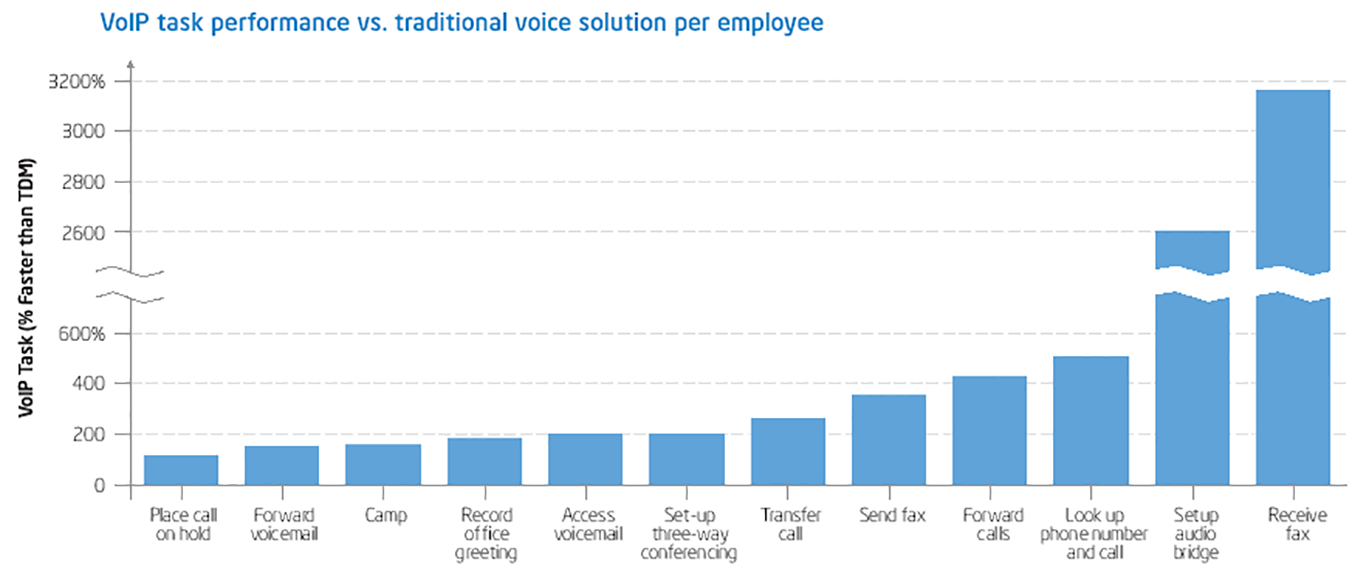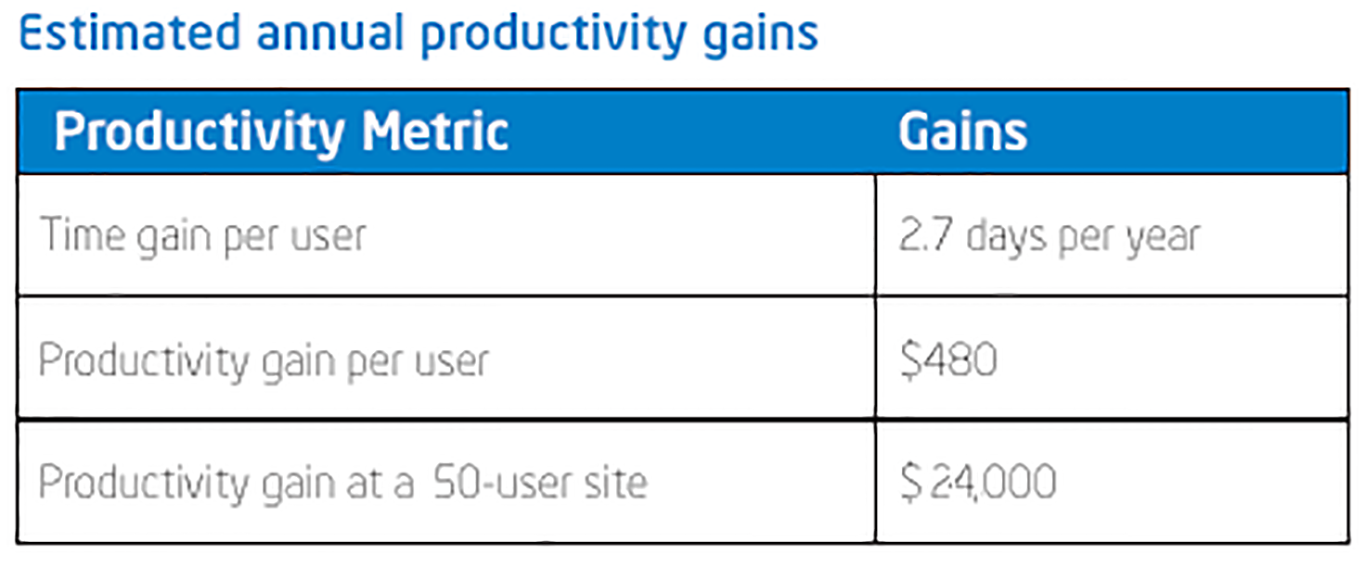Case Studies
Case Study 1: System wide adoption of a VoIP solution
Kunnect conducted a pilot deployment of a hosted, open standards, session initiation protocol (SIP)-based voice over Internet protocol (VoIP) solution at one of its medium-size corporate sites in California, USA. Fifty employees migrated from their existing digital phones to a combination of VoIP softphones and desk phones to service their telephony and voice messaging needs. Over a 30-day period, the pilot captured data on technology integration, cost savings, and user productivity. We used XVP as the single source solution for this pilot.
The VoIP pilot demonstrated interoperability between endpoints and tight integration with the production backend messaging system. We also tested an infrastructure migration path during the move from the existing circuit-based telephony system to an open architecture, packet-based implementation. The pilot was a success, both in terms of the technology and productivity. Participants using the new VoIP solution performed tasks faster and more efficiently than with the traditional phone system. Benefits of an open standards-based VoIP solution include:
- Measurable, real-world user productivity benefits
- Greater voice messaging accessibility and efficiency
- Lower total cost of ownership (TCO)
- Immediate and long-term hard cost savings
- Reduced expense of telecom administrator moves, adds and changes (MACs)
- Simplified telephony management
- Greater flexibility of component selection
- Industry-wide interest in VoIP deployment is substantial and growing
This paper documents how an open standards VoIP solution can reduce costs and increase user productivity.
-
1. Industry Landscape
In the last couple of years, the landscape and the analysis have changed. The industry is moving away from circuit-based voice solutions. End of life and end of support notices for time-division multiplexing (TDM) private branch exchanges (PBXs) and spare parts availability are prompting enterprises to re-evaluate their voice solutions. The Radicati Group, a telecommunications market research firm, predicts that 74 percent of all corporate telephony lines will be IP-based by 2009. Reasons companies give for implementing VoIP include ease of integration, cost savings, flexibility, productivity, consolidated network management and the robust features that VoIP offers to both users and IT operational staff.
-
2. User Benefits
The maturation of VoIP brings greater benefits to users. VoIP products enable more features and tighter integration with backend infrastructure. Tighter integration with our messaging system, for example, allows for voicemail delivery to e-mail inboxes.
New usage models not possible with traditional voice systems compelled us to revisit the return on investment (ROI). As hard costs for VoIP systems decrease, soft cost benefits and increased productivity become an important element of the business value equation that ultimately influences the decision to move to a new VoIP deployment. Additionally, our earlier trials were isolated and we needed to better understand the full impact of how converged communications affects users. We needed a broader and richer deployment of a fully integrated VoIP solution and determined that a pilot that captured data on technology integration, cost savings, and user productivity would help us determine the feasibility of adopting VoIP across the enterprise.
-
3. Developing a Pilot
In our VoIP pilot, we wanted to achieve several high-level objectives that the typical enterprise needs to understand before committing to a new voice technology. Exploring our business goals and the new usage models made possible by VoIP would allow us to thoroughly evaluate the impact of changing such a critical business capability.
Our objectives included:
- Introducing a variety of converged communications devices into the enterprise
- Understanding the benefits of an open standards based VoIP solution
- Evaluating a phased migration plan from a traditional circuit-based PBX to a packet-based PBX voice system
- Measuring the cost savings and productivity impact of using VoIP, converged communications devices, and unified messaging
-
4. Converged Communications Devices
VoIP enables converged communications and unified messaging, which in turn improve employee productivity.
The pilot brought together a number of different devices that typically comprise a complete VoIP solution. The devices included:
- VoIP desk phones
- VoIP softphones
- Pre-existing digital phones converted to VoIP
- Mobile wireless fidelity (Wi-Fi*) handsets
Use of individual devices depended upon the user group and usage model. The pilot presented an opportunity to understand how to maximize the benefits of particular devices based on user needs. It also allowed us to evaluate the planning and infrastructure requirements necessary to support each converged communications device within the solution.
-
5. Open Standards Benefits
The migration from circuit-based voice to packet-based voice is an inflection point in the industry. Rather than deploy a single vendor solution, we chose to define a new voice architecture based on open standards. SIP, in particular, enabled us to design a modular voice architecture using off-the-shelf components. We validated that this architecture was robust enough to operate in a production enterprise. The promise of multi-vendor compatibility and low-cost, swappable units was an appealing proposal. At the same time, tight integration with the messaging back-end was essential.
XVP is a software application that runs on a standard off-the-shelf Dell Blade Servers. The IP PBX uses SIP signaling for setting up and tearing down voice, video and other media sessions.
-
6. Cost Savings and Productivity
We measured hard cost savings and user productivity gains to identify and quantify the cost benefits of deploying VoIP. Hard costs included hardware, software, head count and expenses. We identified soft cost savings by comparing common tasks performed using the existing digital telephony system to the VoIP solution. We then calculated a five-year ROI for an enterprise site using the hard and soft cost data.
-
7. VoIP Architecture
The pilot architecture used open-standards-based components that employed packet-based telephony, thereby allowing communication over an Ethernet network. The IP PBX provided all the standard telephone services and was also tightly integrated into the messaging infrastructure. This provided users with additional, enhanced VoIP applications like unified messaging.
Voice traffic was prioritized and converged onto the standard production local area network (LAN) with the data traffic. Voice trunks were provided by the Hosted environment. This approach allowed us to conduct the pilot with minimal disruption to the existing telecom and network infrastructure. We only need to ensure a correct amount of broadband was available to sustain the enterprise.
VoIP endpoints ultimately connected to the LAN, including Wi-Fi handsets on our wireless network.
The pilot provided the traditional telephony feature sets in addition to new features made possible by VoIP and a SIP-based IP PBX.
The deployment plan included Quality of Service (QoS), which tagged the VoIP endpoint packets so that the network gave higher priority to voice traffic than data packets.
-
8. Study Methodology
More than fifty people representing various user groups and job functions participated in the VoIP pilot over a 30 day period. In order to measure productivity, a human factors engineer (HFE) conducted timed studies of participants in a lab that duplicated an office environment. Testing occurred using the different types of VoIP endpoints listed earlier. With user profile information, we calculated productivity savings using VoIP and then compared this with the legacy voice solution.

-
9. Procedure
Pilot users received basic training on the VoIP systems prior to the study. Their level of expertise varied. Some users were expert, while others were only somewhat familiar with VoIP.
To document telephony behaviors, human factors engineering observed users. We identified and documented specific voice tasks that are typical in the work environment. The tasks included various phone scenarios:
- Recording and activating an out of office greeting
- Looking up a phone number and placing a call to a specified phone number
- Putting a call on hold
- Transferring a call to a specified phone number
- Setting up a three-way conference call (ad hoc conference)
- Retrieving a voicemail
- Forwarding a voicemail to a specified contact
- Faxing a document to a specified phone number
- Configuring a notification when a contact becomes available (camping)
- Automatically forwarding an incoming call to another number (find me/follow me)
- Scheduling an audio bridge for a conference call
- We timed each scenario from the first action taken (mouse click, button press, or handset pick up) to the last action taken to complete the task (mouse click, button press or handset hang up).
To allow for the fact that all users had many more years of experience with a standard telephone than with a VoIP system, productivity times included only those actions that led to successful task completion. We captured data on incorrect user actions on tasks to provide usability design recommendations and to improve help files and training materials.
-
10. Data Analysis
We used a single factor analysis of variance in analyzing the results of each timed task, meaning we only looked at the difference in task times between solutions. We used an accepted significance level of 0.05 in the research, reducing to five percent the likelihood that any differences we measured were due to chance. A set of 29 users took part in the scenario testing portion of the study.
-
11. Financial Analysis
We calculated a five-year financial analysis using two components: hard costs and productivity gains. For the purpose of the analysis, we used a medium-size enterprise site where an existing circuit-based telephony infrastructure already existed.
-
12. Hard Cost Savings
To determine whether moving to VoIP could deliver significant enterprise savings on hard costs, we identified categories on an IT financial balance sheet where VoIP had an effect. We listed recurring costs, with most new investment occurring in the first year of VoIP deployment.
-
12. Telephony
Telephony Hardware, Software, and Licensing
A new PBX installation requires an initial investment to move to a hosted open-standards-based IP PBX. Under the same circumstances as our study, a medium-size enterprise site can expect to save 95% by implementing a hosted IP PBX instead of installing the latest premise based solution. We based this calculation on the costs of the software, network enhancements and licensing compared with equivalent capability on the TDM side.
-
12. Hard Cost Savings
Move/Add/Change Costs
With a legacy PBX system, the costs of MAC orders on individual phones can be significant. Each MAC requires at least one telephony technician to complete each of these tasks. With a VoIP solution, users simply carry their IP phones to a new location and plug them in. Moves and changes are all handled in software, and in some cases a telephony technician is not involved in the process at all. Based on MACs in a medium size-site, we concluded that VoIP provided a 52 percent savings per year over a standard, circuit-based PBX system. In a larger enterprise site, the savings increase due to the logistics of a larger campus and the number of technicians involved in the MAC process.
-
12. Hard Cost Savings
Data Center Footprint Reduction
The data center footprint shrinks significantly when moving to a Hosted VoIP solution. We documented a 60% reduction in total data center area for a 50-user site. The study indicated we could achieve a $5,000 per year savings by replacing the racks of hardware that supported a traditional PBX on a standard phone system with a hosted IPT solution supporting the VoIP IP PBX system. We also calculated savings from reduced maintenance costs and power and air conditioning consumption. More important than the dollar savings is real space savings within the data center. Building a new data center or expanding existing space is extremely time consuming and costly. It is not unusual for an IT department to contract this function at significant cost.
-
12. Hard Cost Savings
Audio Conferencing
Using a VoIP solution for audio conferencing also produces significant savings. We expect to save on small conference calls, defined as those involving six or fewer people. Sixty-six percent of conference calls are small. With the VoIP solution, we avoid costly conference bridge lines, as each user simply calls the conference host directly. This saves both bridge setup time and provider costs. Faster setup time is a productivity gain, and the reduction of provider costs is a hard cost savings.
-
12. Hard Cost Savings
Cabling and Wiring
Because VoIP uses the same network cable as a personal computer, there is no need to run a separate phone cable to each desk. This offers tremendous savings in new buildings without pre-existing cable runs. Cost savings can occur on contractor costs and on the materials needed to wire a separate voice network such as wire, phone jacks, outlets, spare parts, and crash kits. We conducted our VoIP pilot at an existing wired site, therefore we did not itemize these costs in the financial analysis.
-
12. Hard Cost Savings
Monthly Usage Costs
We expect to reduce the costs of local and international calling by moving to VoIP. International call savings will be significant, especially if calls from the site are not routed over a private voice network or heavily compressed. Long distance savings will probably be negligible because of recent competition in the marketplace that has already lowered cost per minute. Calling card savings will also be significant. For example, teleworkers can reduce charges by using a softphone from a hotel, airport or public Wi-Fi hotspot. They can also attend lengthy meetings on an audio bridge while on the road. This usage model provides inherent cost savings from remote IP calling. Home office workers have a similar work profile.
-
13. Productivity Gains
We calculated time saved on the full range of repetitive voice tasks for each user across a medium-size 50 user site. We applied a 50 percent discount on the time savings to obtain the productivity calculation. Net productivity gains using VoIP and unified messaging added up to significant cost savings.

Data gathered in the pilot highlights a VoIP benefit that is often under-represented: VoIP systems greatly enhance user productivity. We found that the advanced features of unified messaging make regular voice tasks far more efficient in comparison to TDM systems available today.

-
14. Conclusion
Our VoIP pilot showed that we can achieve significant cost savings through migrating from an existing TDM PBX solution to an open-standards-based Hosted IP PBX. By analyzing both hard and soft cost savings, we can demonstrate a positive ROI after two years. In addition to hard costs savings, user productivity gains on frequent voice tasks can also show a dramatic benefit to both the enterprise user and the IT department. VoIP continues to drive productivity through new telephony features and unified messaging and thus makes a compelling argument for enterprises considering the move to VoIP.
